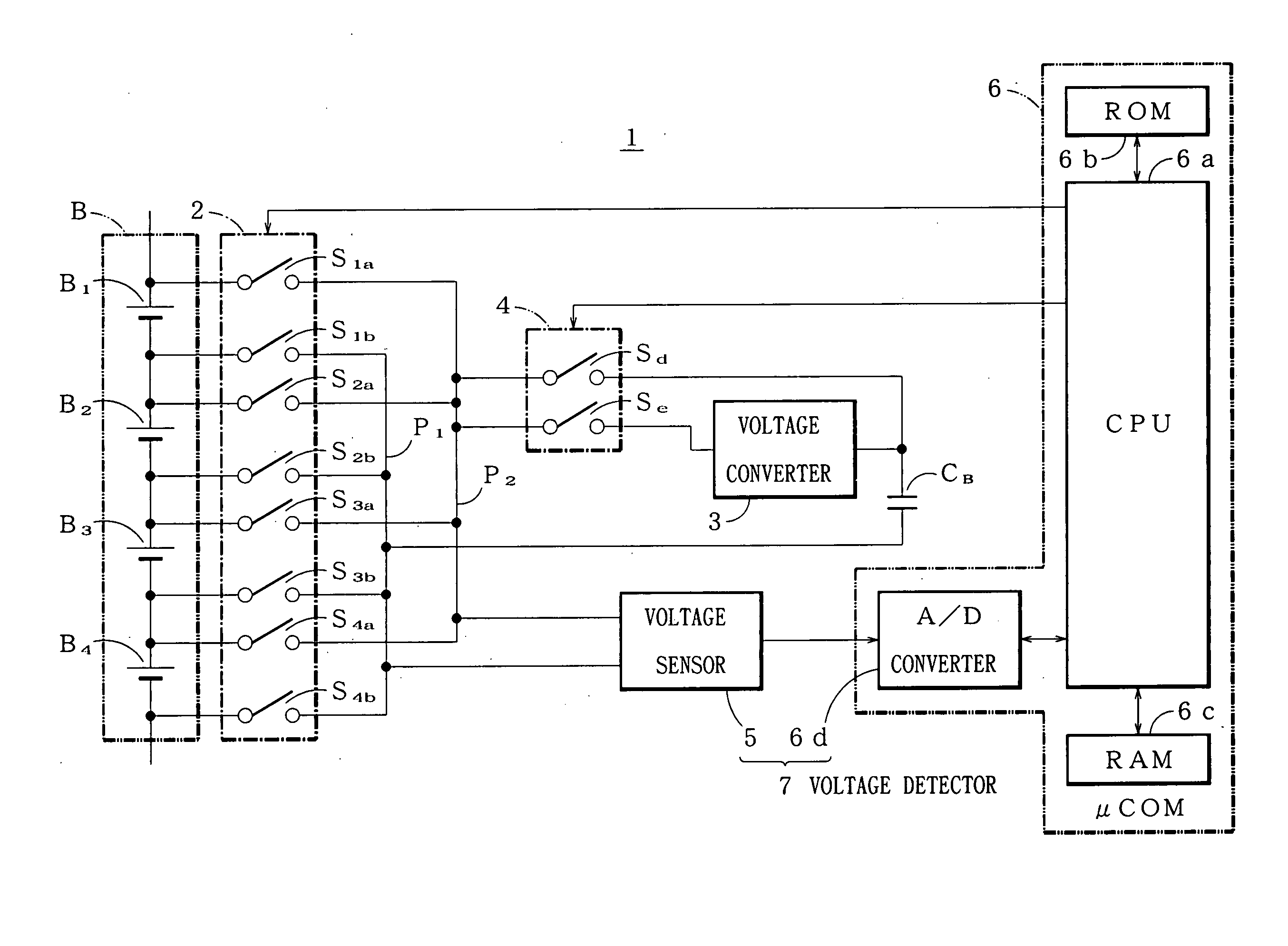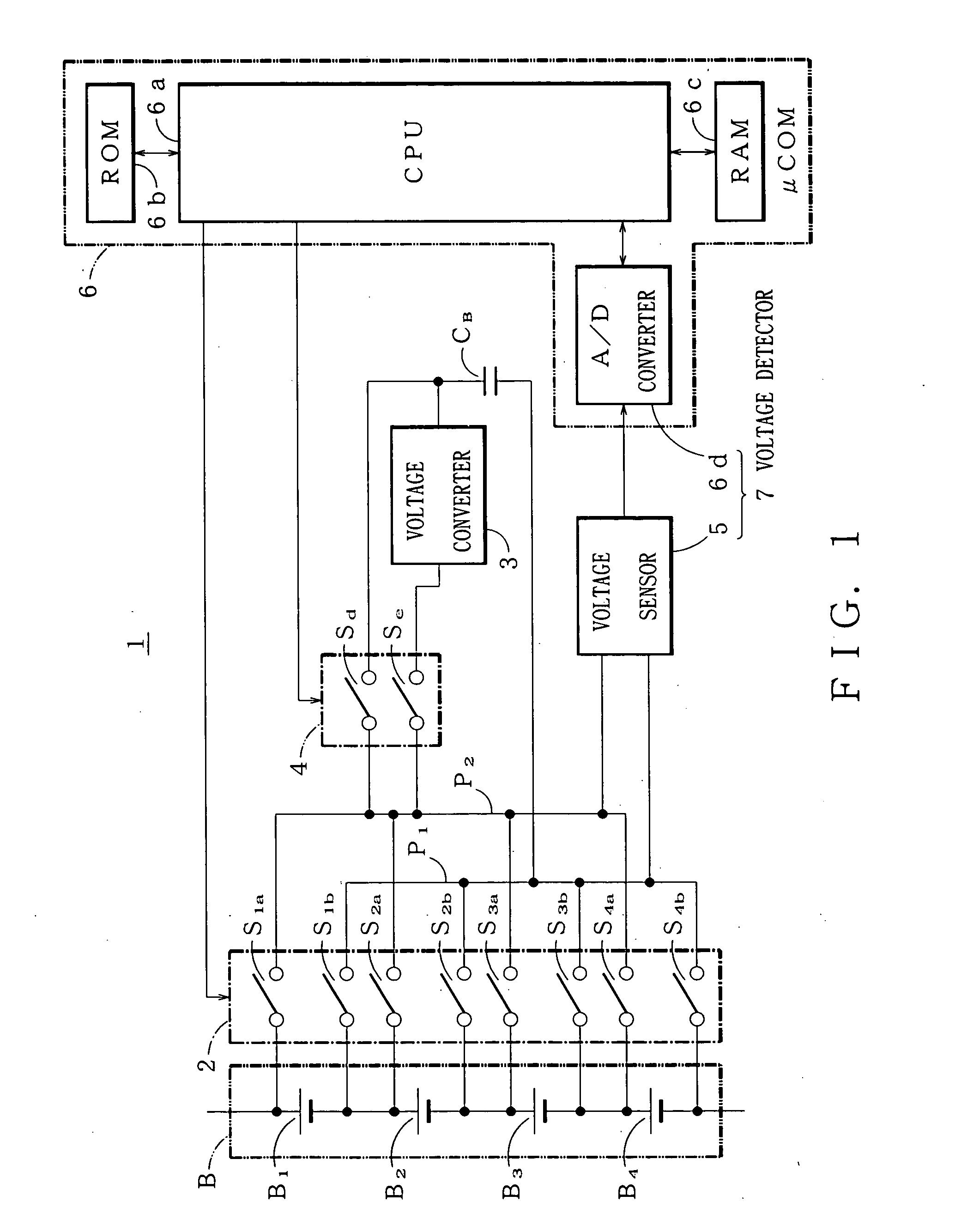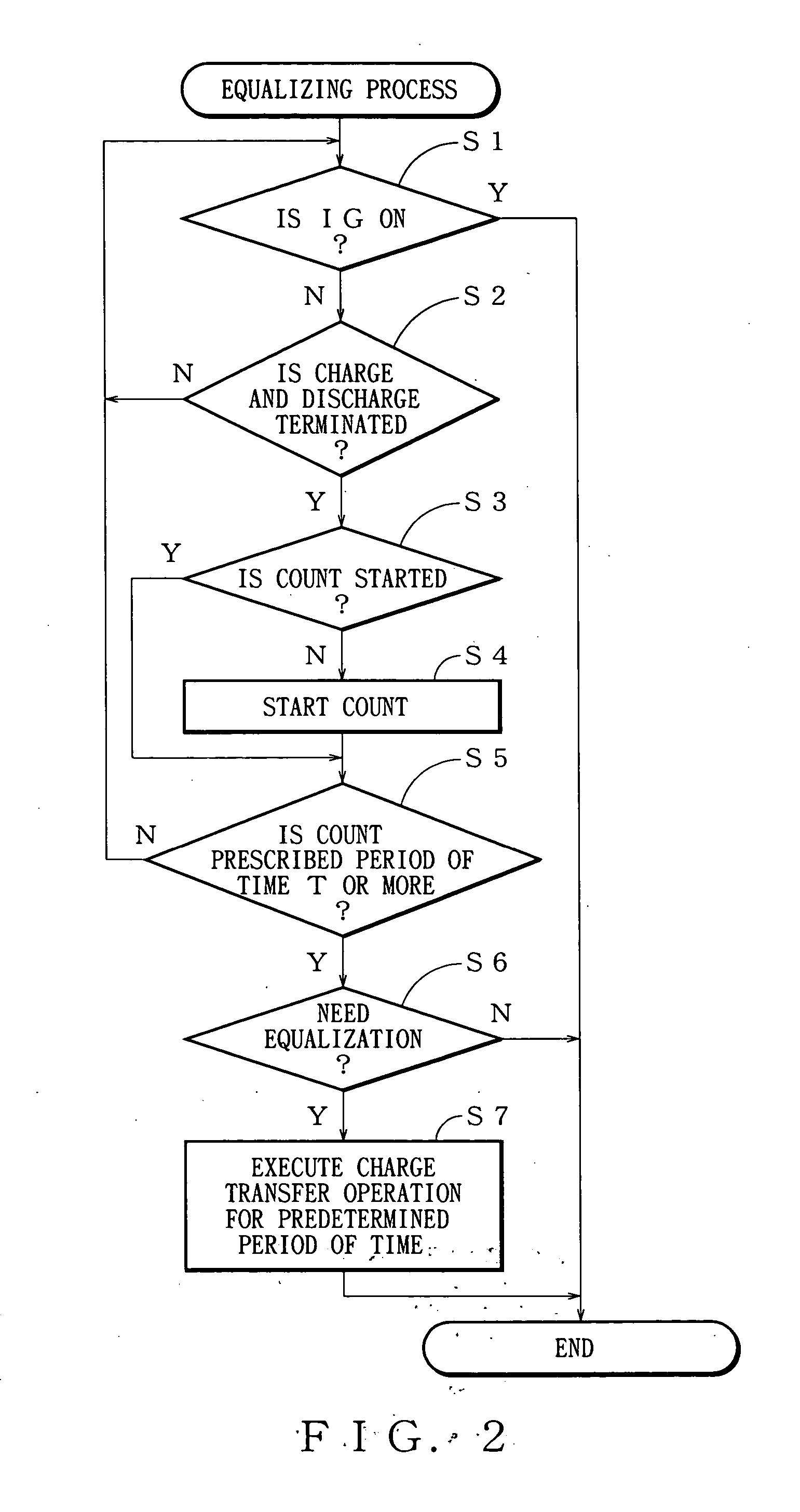Method and apparatus for equalizing secondary cells
a secondary cell and equalization method technology, applied in the direction of electrochemical generators, electric devices, transportation and packaging, etc., can solve the problems of not providing suitable results on battery capacity, the conventional method does not clearly show the detail of equalization, and the equalization of the voltage of the unit cell, so as to avoid the effect of low so
- Summary
- Abstract
- Description
- Claims
- Application Information
AI Technical Summary
Benefits of technology
Problems solved by technology
Method used
Image
Examples
first embodiment
[0026] the present invention is explained by referring to drawings. FIG. 1 is an equalizing apparatus 1 utilizing an equalizing method. The equalizing apparatus 1 of FIG. 1 is utilized for a hybrid electric vehicle driven by an engine and an electric motor (both are not shown). The equalizing apparatus 1 is connected to a main battery B for driving the electric motor.
[0027] The main battery B includes serially connected secondary unit cells B1-Bn. The electric motor and an alternator (not shown) for battery charger are connected to both ends of the main battery B.
[0028] The equalizing apparatus 1 includes a first switch group 2. Switches S1a-Sna are connected to positive terminals of the unit cells B1-Bn respectively. Switches S1b-Snb are connected to negative terminals of the unit cells B1-Bn respectively. Other ends of the switches of the S1a-Sna and S1b-Snb are connected to each other, respectively.
[0029] The equalizing apparatus 1 includes a capacitor CB, a voltage step-up con...
second embodiment
[0055] In the second embodiment, the voltage of the main battery B is measured whether the voltage is constant or not after the IG switch is OFF and the charge and discharge of the battery is finished. However, when the main battery B is charged and discharged and is not in the state of equilibrium, the voltage of the main battery B can not be constant so that the voltage measurement can be made right after the IG switch is turned off to judge the voltage being constant or not.
[0056] In the first and second embodiments, the charge transfer operation is repeated for the predetermined period of time at step S7. A charge transfer operation time, which is a time required for the voltage variation among the unit cells B1-Bn to be removed, may be measured. Then, the charge transfer operation can be repeated only with the charge transfer operation time. This prevents the charge transfer operation from being repeated when the alternator does not charge or the IG switch is off and the variat...
PUM
 Login to View More
Login to View More Abstract
Description
Claims
Application Information
 Login to View More
Login to View More - R&D
- Intellectual Property
- Life Sciences
- Materials
- Tech Scout
- Unparalleled Data Quality
- Higher Quality Content
- 60% Fewer Hallucinations
Browse by: Latest US Patents, China's latest patents, Technical Efficacy Thesaurus, Application Domain, Technology Topic, Popular Technical Reports.
© 2025 PatSnap. All rights reserved.Legal|Privacy policy|Modern Slavery Act Transparency Statement|Sitemap|About US| Contact US: help@patsnap.com



